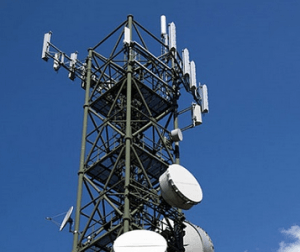GIFEC assuages public feasr about radiations from telecom equipment
 The Ghana Investment Fund for Electronic Communications (GIFEC) has organised a forum in Lawra on electromagnetic fields exposure in an attempt to assuage public fear on emissions from masts, towers and mobile phones.
The Ghana Investment Fund for Electronic Communications (GIFEC) has organised a forum in Lawra on electromagnetic fields exposure in an attempt to assuage public fear on emissions from masts, towers and mobile phones.
Telecommunications equipment enhance lives of society by providing people access to satellites, televisions, radios and telephones among others to communicate and transact business successfully.
But there were several concerns about health consequences of radiations from telecommunications equipment, which triggered temporal ban on erection of masts by the Ministry of Environment, Science and Technology.
The action prompted GIFEC to launch a nationwide education forum to educate the public on electromagnetic fields exposure and its impact on health.
Speaking at one of such workshops in the Lawra Municipality, Mr Abraham Kofi Asante, Administrator of GIFEC said, “Since this discourse had not, and probably would not decrease in the foreseeable future, it has become extremely necessary to share more information about electromagnetic fields”.
The Ministry of Communications commenced the educational workshops in 2010 to raise public awareness on the matter, which he expressed the forum would help ease public concerns on.
“It is my hope that at the end of the workshop, issues that have created barriers and opposition to the deployment of the networks such as the perceived health effects of Radio Frequency Radiation, and laws and guidelines for regulating communications masts shall be addressed.
“By addressing these concerns comprehensively”, he added, “We believe that the fears that have been created in the communities and among our people would be minimised, if not totally eradicated”.
There were presentations by experts from Ghana Atomic Energy Commission (GAEC),Environmental Protection Agency (EPA), Ghana Telecom Chamber and the National Communications Authority (NCA).
Members of the Clergy, the Muslim and Christian communities, heads of schools, and students asked several questions and also shared their concerns and experiences with the experts for redress.
Over the years, there were diverse misconceptions about the effects of Electromagnetic Fields exposure from telecommunication masts or towers constructions.
Sections of the people believe it caused various kinds of cancer, headache, diarrhea, stomachache, et cetera.
Speaking on radio signals from mobile phone base stations, Dr Philip Deatanyan, a representative from the GAE, said it was encouraged to have more sites installed to reduce power and ensure more signals, which could cut down the effects.
He said many of the concerns raised about effects of cancer were not scientifically proven, but cautioned that uninterrupted exposure to telephone equipment for a long period could pose some health challenges.
Therefore, he said, “It is highly recommended to take precautionary measures in dealing with mobile phones. Do not spend so much time on it”.
On the role of the National Communications Authority, Mr Kofi Datsa, who represented the NCA Director-General, said preliminary results from a research conducted on masts showed no adverse effects on humans.
However, he said telephone masts erected 100 metres away was deemed safe to the public and encouraged the public to buy their handsets from licensed phone dealers as quality or approved phones by the NCA had lesser effects of emissions.
Mrs Anastasia Blankson, Wa office programmes officer of EPA, said the EPA had comprehensive guidelines on erection of masts or towers, and that for educational and health institutions erection of masts was not allowed.
“If you want to erect masts in educational or health institutions, they must be consulted with approval given,” she added.
Source: GNA
